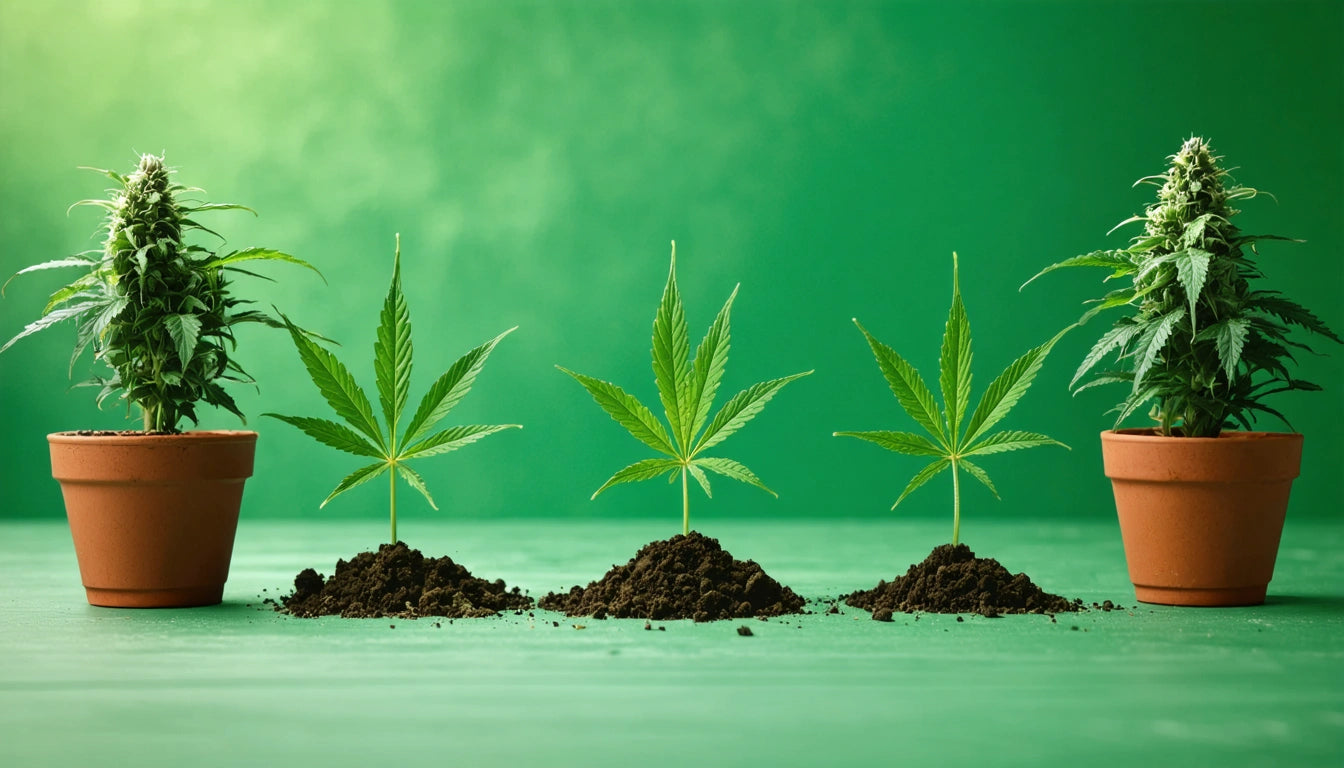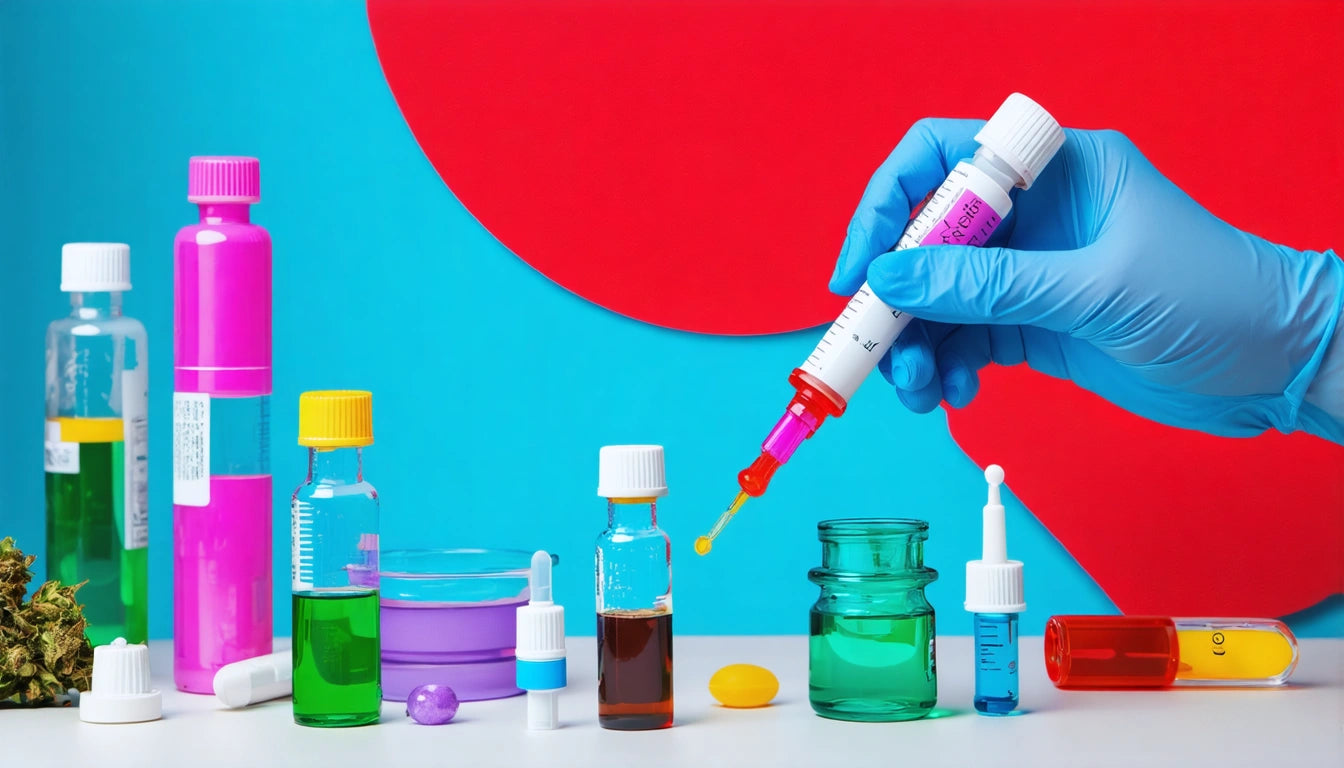Table of Contents
Comprehensive Guide to Growing and Caring for Weed Plants Naturally
Growing cannabis at home can be a rewarding experience that connects you with this versatile plant while ensuring you have control over the cultivation process. Learning how to grow a weed plant naturally not only produces cleaner products but can also be more environmentally sustainable and cost-effective. This guide will walk you through the entire process from germination to harvest, with special attention to organic methods and natural techniques.
Natural Cannabis Cultivation Basics
Before diving into how to plant weed, it's important to understand what cannabis plants need to thrive naturally. Cannabis requires:
- Adequate light (whether sunlight or grow lights)
- Well-draining soil rich in organic matter
- Proper watering schedule
- Nutrients appropriate for each growth stage
- Good air circulation
- Temperature control (typically 70-85 °F during the day)
- Humidity management (40-70% depending on growth stage)
When growing naturally, you'll want to avoid synthetic fertilizers and pesticides. Instead, focus on building living soil with beneficial microorganisms that create a self-sustaining ecosystem for your plants.
Starting Your Cannabis Growing Journey
Selecting Quality Seeds
The first step in how to grow a weed plant from scratch is obtaining quality genetics. Choose seeds based on:
- Indica, sativa, or hybrid varieties depending on desired effects
- Auto-flowering or photoperiod types
- CBD:THC ratios for specific therapeutic needs
- Climate suitability for your growing environment
Germination Process
To germinate cannabis seeds naturally:
- Soak seeds in filtered water for 24 hours
- Transfer to a damp paper towel placed between two plates
- Store in a warm, dark place (70-80 °F)
- Wait 3-7 days for taproots to emerge
- Plant carefully in small containers with seedling mix
As detailed in this comprehensive seed growing guide, proper germination sets the foundation for healthy plants.
Vegetative Growth and Plant Training
During the vegetative stage, focus on developing strong roots and stems. This is also when you'll want to implement training techniques to maximize yields.
How to Train Weed Plants
Training shapes your plants for optimal light exposure and space utilization:
- Low-Stress Training (LST): Gently bending and securing branches to create an even canopy
- Topping: Removing the main growth tip to create two main colas
- FIMing: A modified topping technique that creates four main growth tips
- Screen of Green (SCROG): Using a screen to create an even canopy
These techniques help answer the question of how to make weed plants produce more buds by increasing light exposure to multiple bud sites instead of just the main cola.
Flowering Stage and Bud Development
The flowering stage is when your plants develop the buds that will eventually be harvested. For photoperiod plants, this stage is triggered by changing the light cycle to 12 hours of light and 12 hours of darkness.
How to Make Weed Plants Bud
To encourage robust bud development:
- Switch lighting schedule to 12/12 for photoperiod plants
- Adjust nutrients to flowering formulas (higher in phosphorus and potassium)
- Maintain proper humidity (40-50%) to prevent mold
- Continue pruning to remove unnecessary foliage that blocks light from reaching buds
- Support heavy branches with stakes or trellises
During this stage, you'll see pistils develop, followed by trichome formation. The trichomes contain the cannabinoids and terpenes that give cannabis its effects and flavors.
Harvesting, Drying, and Curing
Knowing when and how to harvest is crucial for potency and flavor. Look for these signs of readiness:
- Pistils darkening from white to orange/brown (70-90%)
- Trichomes turning cloudy or amber (depending on desired effects)
- Leaves beginning to yellow slightly
- Buds feeling firm to the touch
After harvesting, proper drying and curing are essential steps in how to make weed joint-ready from plant material. Slow drying in a dark room with 45-55% humidity for 7-10 days, followed by curing in sealed containers for at least two weeks, will significantly improve flavor and smoothness.
Once properly cured, your cannabis will need appropriate storage. Many growers use specialized storage bags designed for cannabis preservation to maintain freshness and potency over time.
Advanced Techniques: Revegging and Plant Steering
How to Reveg Weed Plant
Revegetation is a technique that allows you to return a flowering plant to the vegetative stage:
- After harvesting most buds, leave several lower branches with leaves
- Change light cycle back to 18/6 or 24/0
- Increase nitrogen in feeding regimen
- Be patient as the plant may take 2-3 weeks to show new growth
- Once new growth appears, treat as a vegetative plant
This technique can extend the life of prized genetics or mother plants used for cloning.
Plant Steering for Weed Plants
Plant steering is a more advanced cultivation method that uses environmental controls to direct plant growth and development. By manipulating factors like:
- Vapor pressure deficit (VPD)
- Irrigation timing and volume
- Nutrient ratios
- Temperature differentials (day/night)
Growers can influence how plants allocate resources between vegetative growth and flower production, potentially increasing yields and quality.
Natural Growing Practices for Sustainable Cannabis
Growing cannabis naturally isn't just about avoiding chemicals. It's about creating sustainable systems that work with nature rather than against it.
Common Questions About Natural Growing
Can you use Miracle-Gro on weed plants?
While technically possible, Miracle-Gro is not recommended for cannabis as it contains high nitrogen levels not ideal for flowering and may contain synthetic components that affect flavor and quality.
How do I plant weed in living soil?
Living soil incorporates beneficial microorganisms, worms, and natural amendments to create a self-sustaining growing medium. Build your soil with:
- High-quality compost
- Worm castings
- Mycorrhizal fungi
- Bat guano
- Kelp meal
- Neem cake
As outlined in this guide to growing exceptional cannabis at home, building a relationship with your plants through daily observation and care is the key to success with natural growing methods.
By following these natural growing principles, you'll not only learn how to grow weed plants that produce quality buds but also develop sustainable practices that benefit both your plants and the environment.











Leave a comment
All comments are moderated before being published.
This site is protected by hCaptcha and the hCaptcha Privacy Policy and Terms of Service apply.